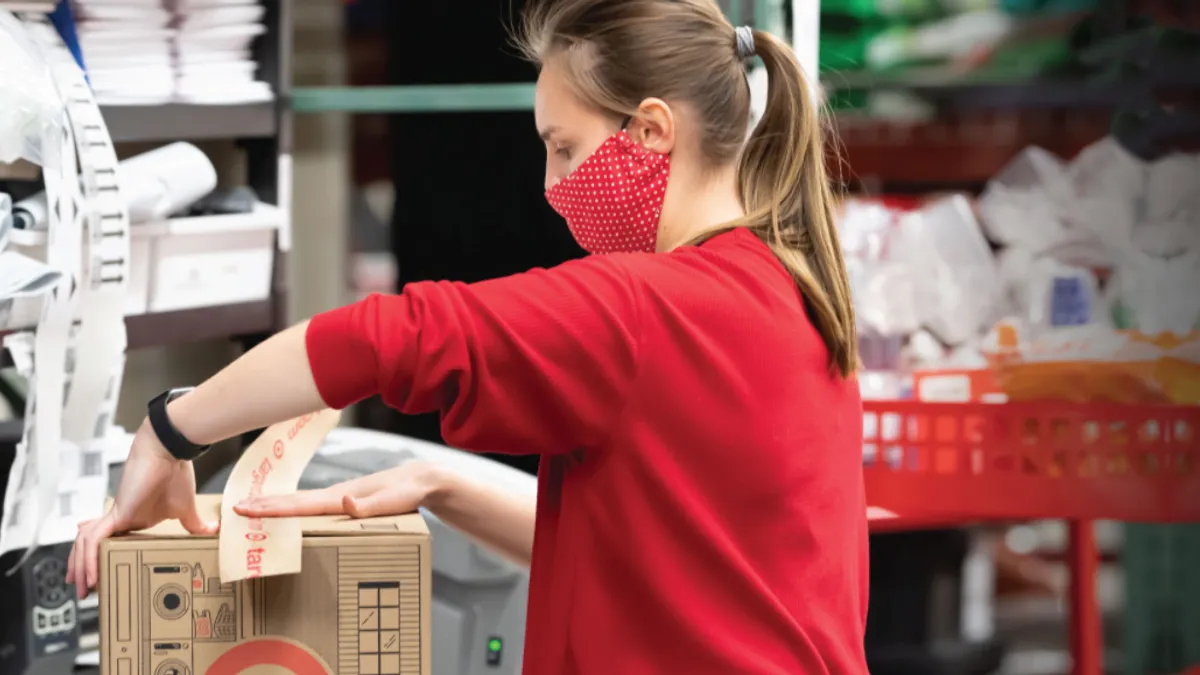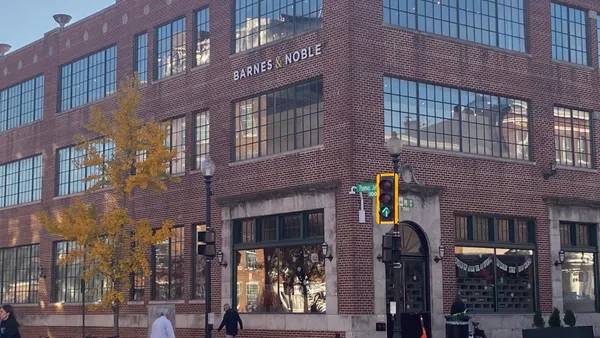Dive Brief:
- Amid a widespread supply chain crunch, Target executives said they "feel good" about their inventory levels leading up to the holiday season. Target's inventory in Q3 increased by over $2 billion compared to last year.
- Similar to recent quarters, traffic was the primary driver of Target's growth in the third quarter with comparable sales up 12.7% on top of last year's 20.7% growth. Store comparable sales increased 9.7%, while digital comp sales rose 29% following last year's 155% uptick.
- Alongside the Q3 results, Target raised its outlook for the fourth quarter to high-single-digit to low-double-digit growth. The retailer previously expected a high-single-digit increase.
Dive Insight:
In a call with investors and analysts, Target executives said they're positioned to meet holiday demand despite the supply chain challenges that only intensified in the recent quarter.
Target, like many retail giants, chartered ships to get goods in time for the holidays. Executives on the call said they don't expect supply chain constraints to go away going into the start of 2022.
"Our team has done an outstanding job in the face of these challenges — identifying bottlenecks and finding solutions to keep inventory flowing throughout our network," Target CEO Brian Cornell said on the call. "Although those efforts drove some incremental costs in the quarter, we view them as a continuation of the many productive long-term investments we're making in our business."
Consumers responded to these efforts through strong traffic, Cornell added. Top-line sales grew 13.3% year over year to $25.7 billion. Comp sales throughout all five of Target's core categories — apparel, food and beverage, essentials and beauty, home as well as hardlines — saw double-digit growth in Q3.
Some of Target's investments have also paid off, with net earnings increasing 46.8% this quarter. This year, the retailer debuted its first Ulta shop-in-shop locations, more than doubled its Apple shop-in-shops and tripled its Disney shop-in-shops ahead of the holiday season.
Target's same-day channels (Order Pick Up, Drive Up and Shipt) continue to gain traction, growing nearly 60% in Q3 in addition to last year's 217% growth. Target introduced new features to its same-day services late last month, such as the Shopping Partner tool, the "Forgot something?" button and the ability to add backup grocery products in case consumers' first choice isn't available.
The retailer's decision to use stores for fulfillment and its "improvements to push a higher margin mix have helped to offset many of the pressures in staffing, distribution and supply chains that are now affecting all retailers," Neil Saunders, managing director of GlobalData, said in emailed comments. "Essentially, Target has put itself in a favorable position that means it is more insulated, although not immune, from inflation in costs and overheads."
Inflation, which has benefited fellow big-box player Walmart's sales in its recent earnings, could also be "modestly helpful" to Target because of consumers who may want style and quality while still staying within budget, Saunders said. With private label growth being historically linked to inflation, Target's assortment of 48 owned brands may be able to reap rewards.
Early shoppers may have also given Target an advantage, Saunders said. "This has, especially in October, given an edge to Target's growth."













